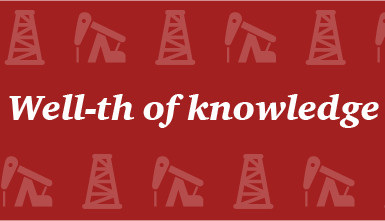
New Signs Underscore Oil Recovery for Real
Oil and gas production from the major US shale formations continues to trend downward which is an expected result from idled rigs, decreased well completions, reduced capital spending, and natural declines in well production curves. At the same time, oil demand continues to grow and could surpass the latest projections (just as it did last year). We are watching a recovery in action, and once again, we are seeing the adage play out that the best cure for low oil prices is low oil prices. But, the pain from the downturn and the speed at which it happened will take time to get past and provide some important lessons for those that are willing to learn.
In the near term, declining production and rising demand will help rebalance supply-demand fundamentals which in turn should strengthen prices. The market is jittery right now as shown by the 5% gain in crude-oil futures prices for May delivery following the EIA’s report of a 4.9 million drawdown of crude-oil stockpiles for the week ending April 1. This follows a 40% increase from the $30 lows in January to the $42 price today.
Beyond the inherent volatility of daily commodity price changes, a deeper operational shift is taking place. This shift has to do with the fact that the industry has not been replacing the reserves that are being produced today which sets the stage for a shortage tomorrow.
Reserve-production ratio (RPR or R/P) and reserve-replacement ratio (RRR) are critical metrics that measure the long-term health of oil companies. The reserve/production ratio measures the remaining years in a company's reserve base (dividing total proved reserves by last year's production). The reserve-replacement ratio measures the amount of proved reserves added to a company's base in a year relative to the amount of oil and gas produced. Both ratios are highly sensitive to realized and forecasted prices.
The graphic below shows the average RRR of nine large US independent oil producers over the last five years. The average RRR for these bellwether companies peaked in 2013, when new proved reserves exceeded 150% of the production (this was caused partially by a combination of higher prices which enabled some reserves to be considered economical and new technologies shifting “probable” reserves to “proven” reserves). But the RRR has plummeted since then. Last year, the reduction in reserves exceeded oil companies’ production, and I see further challenges on the horizon for 2016.
The RRR is an important operational metric used by lenders and investors to drive financing decisions and impacts balance sheet condition. Further complicating the financial picture will be the reclassification of reserves due to economic considerations. The classifications are based on historical price averages (past six months) and the cost to produce the barrel, and both of these determine whether the barrel can be called a proven reserve and included on the balance sheet. Said another way, what was an economically viable barrel (based on higher historical average prices, say above $60 bbl) can change based on the latest historical average price used and the current cost to produce the barrel.
Taking the reserve replacement ratio in combination with the reclassifications will lead to balance sheet stress. Bankers meeting with oil companies will face the option of foreclosing (leading to bankruptcies) or modifying the debt structure, and it will be an interesting time for such discussions and decisions given the recent run up in oil price. Nevertheless, there is a path forward for both the operators and lenders, and this is part of the process.
From my perspective, the recovery started several months ago. With fewer new wells coming online and the significant drop in the reserve replacement ratios coupled with continual rising in demand tell me the oil industry is past the worst of the downturn.
But the industry is by no means out of the woods. As long-term supply and demand fundamentals come into greater balance, the successful companies will likely be the ones that can replace their reserves in a low-priced environment and operate within their free cash flows instead of relying on debt and rising commodity prices. My prior post showed many companies remain in an early stage of thoughtfully, strategically transforming their business to operate in a low-priced environment.
Many lessons have been learned the hard way over the past 24 months. Learning to operate within the free cash flow a company generates may not be the most exciting way to run the business, but it is a sustainable and prudent way to survive the ups and downs of the commodity cycles. The downstream industry learned this lesson in 2000-2003 to then enjoy the “golden age of refining”. The upstream industry is getting taught a similar lesson, and time will tell which companies learn the lesson of operating within their free cash flow.
For more information on managing through the downturn, please visit: http://www.pwc.com/us/en/energy-mining/fit-for-50-dollar-oil.html


Semi Retired at Home
7yhttp://seekingalpha.com/article/3970134-bloomberg-vs-navigant-research-will-evs-produce-new-oil-crash
Semi Retired at Home
7yNo it won't. https://www.theguardian.com/business/2016/may/05/oil-firms-environment-energy-climate-change?CMP=Share_iOSApp_Other
Consultant at Comet Environmental Consulting
7yIt will come back.
Senior Strategist at Aramco • Systemic Strategist • Geopolitical, Macroeconomic and Energy Analyst • Scenario Planner
7yMany lessons learned and even more to learn. For future purposes it is interesting what are the key driving forces behind these.